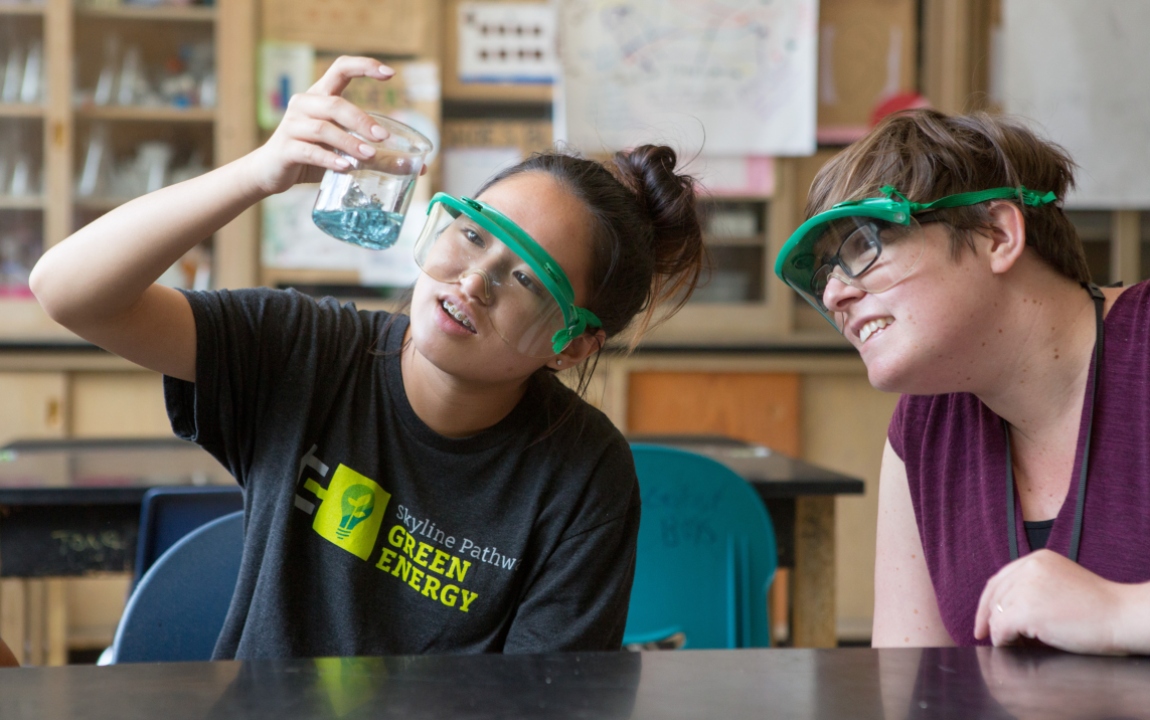
In order to skillfully embrace the challenges and opportunities they will encounter in life, our students need to develop sophisticated thinking skills that extend far beyond disciplinary boundaries. From understanding and unpacking problems, constraints, and possibilities, to identifying patterns and addressing biases, the types of thinking we should be nurturing in students are many and complex.
PBL structures provide fertile soil for these thinking skills, but we need to be intentional about sowing and watering the seeds. As John Mergendoller writes, “Does PBL teach critical thinking? Our answer is that it can, but a project has to be structured with critical thinking as a goal.” In order to make sure our projects teach students substantive critical thinking skills, we must think purposefully about designing complex, high-level tasks and driving questions, and about carefully scaffolding thinking skills throughout the project.
So, how can we systematically scaffold thinking skills? As we know, a scaffold is any support that helps students move from their current knowledge or skill level to a new level. In the case of specific types of thinking skills, the following steps can be helpful:
Clarify the Learning Goal:
Just like any other type of content or skill, it’s important to begin with the end in mind. The clearer we can be with ourselves about the types of thinking we want students to learn and practice, the more aligned our supports will be. This can be challenging when it comes to thinking, because thinking is so complex and multifaceted and many skills are often lumped together under the umbrella of “critical thinking.” But it can be helpful to drill down as much as possible during the planning process: Am I asking students to generate open-ended questions? To compare multiple perspectives? To make meaning of a visual input? To synthesize and draw conclusions? Having clarity about the particular aspects of thinking you are targeting can help you develop scaffolds to get students there.
Formatively Assess and Provide Guided Practice:
To provide effective scaffolds, we need a sense of students’ current capacity/skill level, but the best way to assess students’ thinking is by giving them authentic, visible opportunities to think! To this end, it can be helpful to combine the teaching and formative assessment of thinking skills through the use of thinking routines, like those created by the Visible Thinking Project at Harvard’s Project Zero, in addition to other structured protocols, classroom discussions, and writing opportunities. Routines like these allow students to practice thinking skills in structured but flexible and authentic ways and to learn from one another’s thinking. They allow the teacher a window into student thinking, which makes it easier to address misconceptions and new learning opportunities and to identify appropriate supports.
Create Space for Thinking about Thinking:
Researcher Nancy Chick writes that “Metacognitive practices increase students’ abilities to transfer or adapt their learning to new contexts and tasks. They do this by gaining a level of awareness above the subject matter: they also think about the tasks and contexts of different learning situations and themselves as learners in these different contexts.” Having students reflect on the kinds of thinking they are practicing, and consider when and how these different modes of thinking make sense to use, empowers them to use the tools in their mental toolboxes in skillful and appropriate ways.
One of the major goals most teachers have when embarking on a PBL journey is the goal of increasing students’ capacity to think in complex ways. Defining a meaningful, authentic, and challenging task is part of this process, but so is intentionally scaffolding student thinking throughout the project.

